Fox News Flash top headlines for July 16
Fox News Flash top headlines are here. Check out what's clicking on Foxnews.com.
As summer heats up, more families are heading to the pool to cool down.
But certain pool toys can put kids at risk for injuries and even drowning.
Dr. Meghan Martin, a mother of four and a pediatric emergency medicine physician at Johns Hopkins All Children’s Hospital in St. Petersburg, Florida, revealed her top five most dangerous water toys, along with her tips for staying safe this season.
1. Reuable magnetic water balloons
No. 1 on Martin’s list of dangerous water toys is reusable magnetic water balloons.
"The magnets hold the balloons together and they're kind of a cool idea," Martin told Fox News Digital.

Meghan Martin, M.D., Johns Hopkins All Children's Hospital Pediatric Emergency Medicine, has shared her top five most dangerous pool toys to avoid playing with this summer. (Johns Hopkins All Children's Hospital)
"But those magnets, unfortunately, can kind of pop out and if kiddos swallow magnets, they can actually cause a lot of really bad bowel problems, and they can get really sick. So anything with small magnets, we don't like around small kiddos."
Martin said she had a case last summer in which a girl put two of the magnets in her nose, one on each side.
CHILD DROWNING PREVENTION TIPS: KEEP KIDS SAFE IN THE WATER THIS SUMMER
"They kind of squeezed the septum in the middle — so, they can also cause other types of injuries as well," Martin said. "The reusable water balloons without magnets are great. But the ones that have magnets in them, those can be dangerous."
2. Neck floats
Martin's list, which was shared on Johns Hopkins All Children’s TikTok account, garnering more than 450,000 views, also mentioned neck floats — which keep a small child's head above water.
@hopkinsallchildrens Follow these 5 tips for a safe and healthy summer! #summersafety #pediatrics #safetyfirst #safetytips #stpetersburg #pediatric #allchildrens #stpete #childhealth #childrenshospital ♬ original sound - Johns Hopkins All Children’s
"These are risky for a couple different reasons," Martin said.
"One of them is the asphyxiation risk. Any time something is around the neck, we get concerned about that airway. If they got hung up on something and put pressure on the airway, we don't want that at all."
Flipping over is another risk of putting a child in a neck float. If it flips, the baby's face will plunge underneath the water, and it could take an adult seconds or minutes to notice and respond.
"We want them to have their face above the water," Martin said.
"I would completely avoid these neck floats — in the bathtub and in pools."
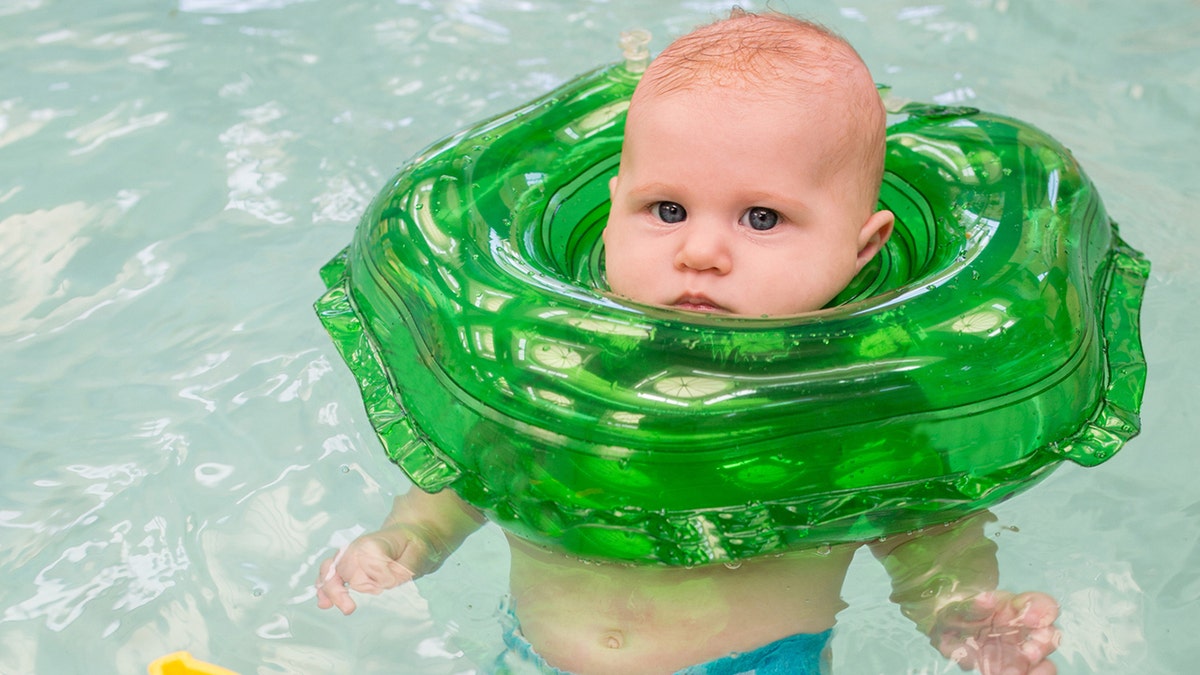
Whether kids are in the pool or even the bathtub, Dr. Martin encourages parents to "completely avoid" the use of neck floats for babies. (iStock)
Martin said putting a child in a device like a neck float gives parents a false sense of security that their baby is safe.
"You could get distracted on your phone or something like that, thinking that the kid's safe and floating," she said.
WATER SAFETY TIPS FROM EXPERTS FOR FAMILIES AND CAREGIVERS AS DROWNING DEATHS INCREASE
"It’s important to always be paying attention to your kids around the water. No phones at all and no neck floats," Martin added.

Arm floaties for younger kids, said Dr. Martin, can give the parent and the child a "false sense of security." (iStock)
3. Water wings or floaties
Another item that gives both parents and children a false sense of security, Martin said, is water wings or floaties.
"For the kiddos, when they use these in the water, they think they can swim when they probably cannot," Martin said.
7 WAYS TO STAY SAFE IN THIS SUMMER’S SCORCHING HEAT
"So, later, they may jump in the pool [without the water wings on] and sink right to the bottom because they cannot swim."
Martin said water wings are also dangerous because they put a child in what is called the "drowning position."
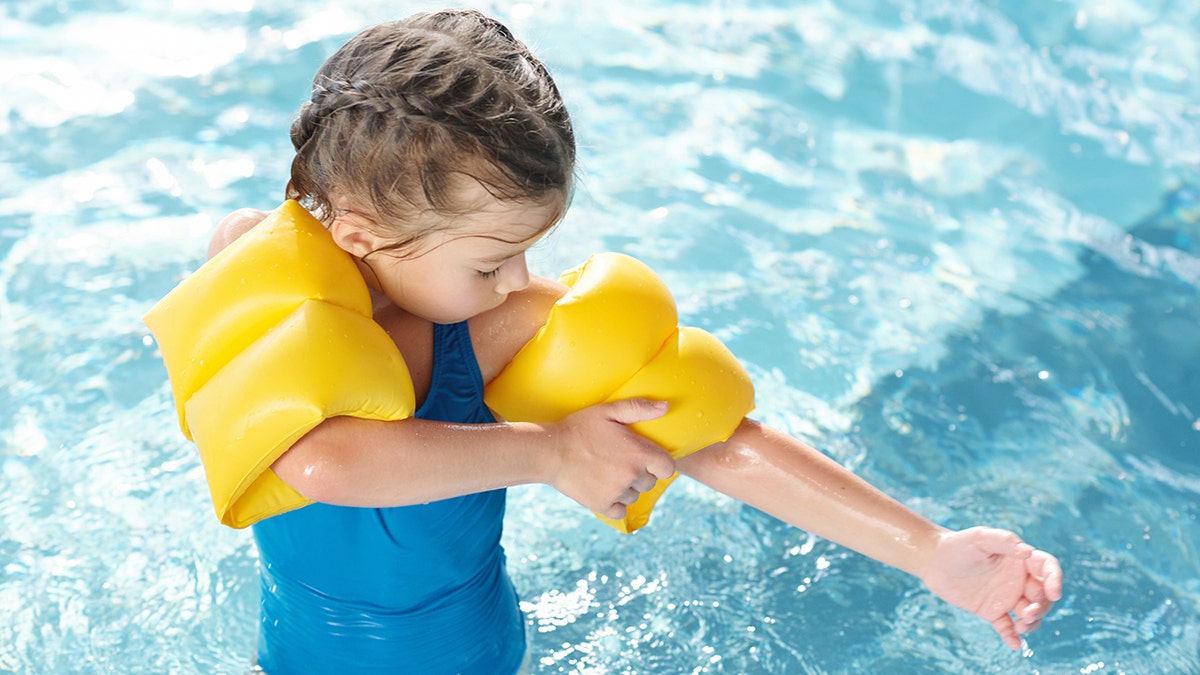
Water wings can put the child in a position referred to as the "drowning position," as the child ends up floating vertically. (iStock)
"They're straight up and down in the water," she said.
"For a swimming position, you're a little bit more horizontal, either on your front or on your back. And so in that [vertical] position, you tend to sink down, and so that's not a good position."
GRANGER SMITH'S WIFE, AMBER SMITH, PARTNERS WITH DROWNING PREVENTION ORGANIZATION TO DRIVE AWARENESS
Floaties can easily deflate if they get hooked on something or have small holes due to wear and tear, which can be dangerous if parents are not paying close attention.
"I have shared a story about my own son when he was about 18 months," Martin said.

Children can easily forget they're not wearing floaties and attempt to jump back into the water without them. (iStock)
"We took the water wings off to have [an ice pop], and then he threw himself immediately into the pool without them on and he went under. We were able to pull him up quickly, but it was very scary."
4. Large, heavy floats
Martin also said she avoids large, heavy floats that kids could get trapped under in the water.
BEACH SAFETY TIPS: 7 THINGS TO DO IN A RIP CURRENT AND HOW TO STAY SAFE NEAR THE WATER
"Kids can get stuck underneath these floats or stuck under the water, and, obviously, that's scary for them," she said.
"If they’re stuck under the water, they’re not able to breathe, so [I advise] caution with large floats or anything like that."
5. Mermaid tails
Mermaid tails — while cute and popular — are also a hard "no" for Martin.

Anything that can possibly restrict any sort of leg or foot movement is considered to be a drowning risk in Martin's book. (iStock)
"Anything that restricts leg movement or foot movement is a drowning risk," Martin said.
BE WELL: RECOGNIZE THE WARNING SIGNS OF ‘DRY DROWNING’ AND TAKE QUICK ACTION
"We want kids to be able to kick their feet to get back up to the surface. If movement is restricted, they may not be able to do that."
Other important tips and information
The pool itself is the greatest risk to kids, Martin said.
So, putting barriers in place is key.
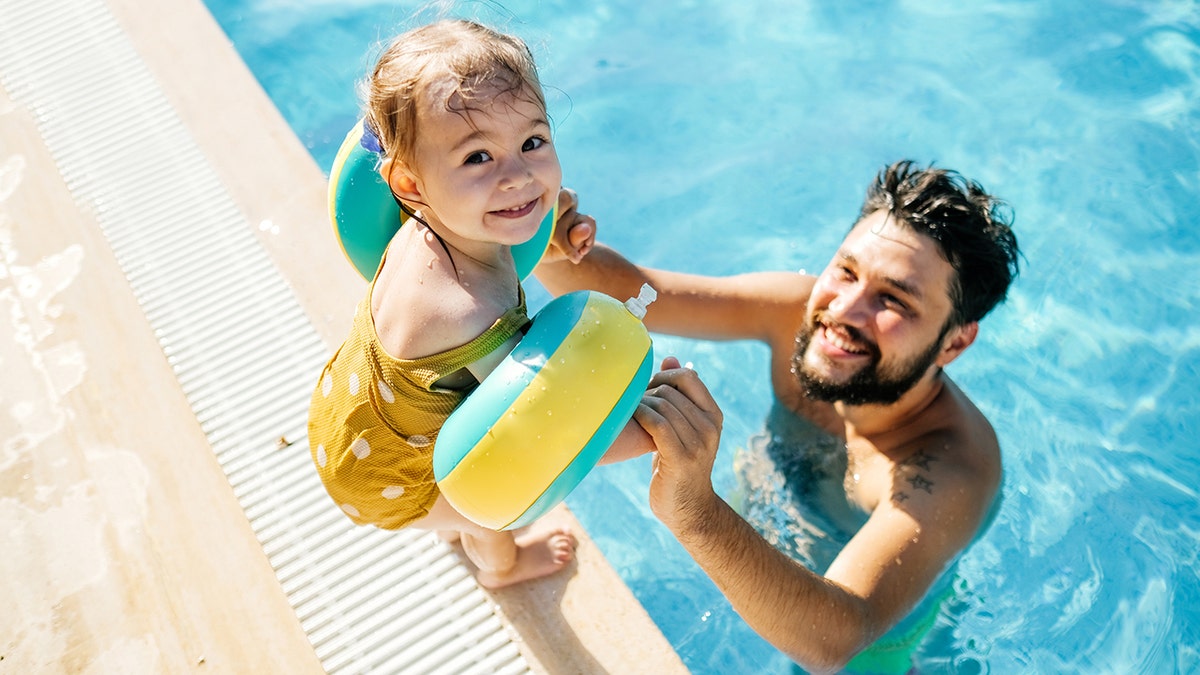
The parents or the adult at the pool is the first layer of protection for kids, said Dr. Martin. (iStock)
"Layers of protection are important and you as the parent or guardian are the first layer of protection," she said.
"Your attention needs to be on the kids at all times. No distractions. Have a ‘water watcher,’ so there’s someone who's designated and sober to watch the kids in the pool."
The second layer of protection, Martin said, is a secure pool fence or a physical barrier to prevent kids from getting in when they’re not supposed to be in the water.
"You want a good self-closing latch," she said.
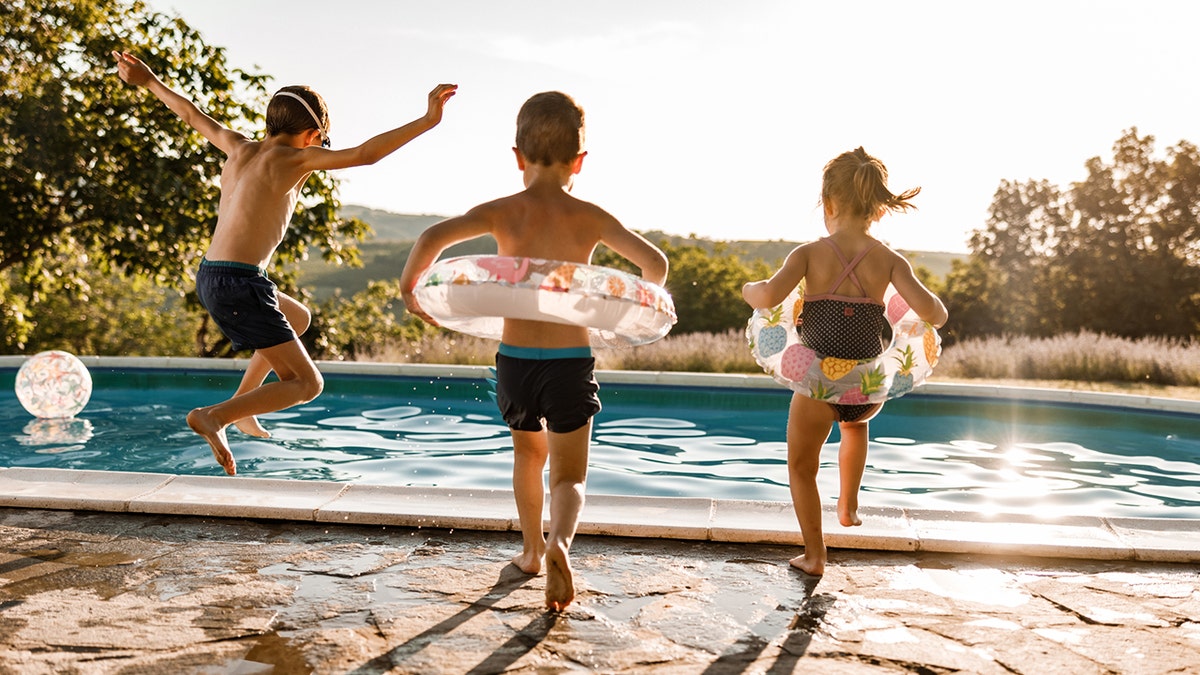
Parents need some sort of physical barrier to prevent their child from getting into the pool whether that be a fence around the pool or a door alarm leading to the outside. Still, supervision is key. (iStock)
"Door alarms are also really important or some sort of alarm to let parents know that the kiddo has left the house and gone into that pool area itself. These can even be important in things like Airbnbs or VRBOs where people are staying somewhere that they're not familiar with or the kid is staying somewhere they're not familiar with."
A smart swimsuit color choice could save the day.
Martin said door alarms are easy to purchase online and can be installed and removed at vacation rentals without causing any property damage.
Early swimming lessons, Martin said, are one of the best ways to ensure kids are safe around the water.
For more Lifestyle articles, visit www.foxnews.com/lifestyle
But if the worst should happen, and a child does get into the pool and needs help, a smart swimsuit color choice could save the day.
"Blue swimsuits, green swimsuits, a lot of the cooler colors can be more difficult to see under the water," Martin said.
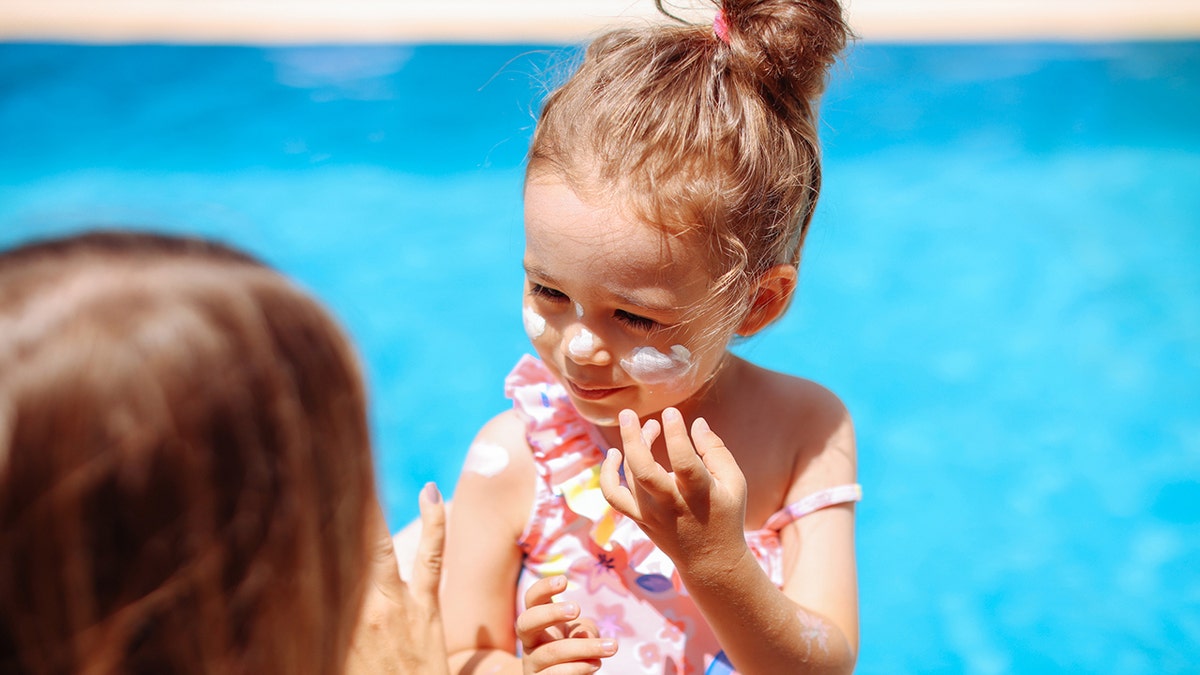
In the heat, it is important to keep your child hydrated and well protected from the sun. (iStock)
"If a child were submerged under the water, it's more difficult to get your attention. But if you saw something bright orange under the water, you would be more attentive to that color. So pick a brighter colored swimsuit, like red, orange, yellow, something that you'll be able to see a little bit easier."
Sun exposure and dehydration can deplete a young swimmer’s energy, making them more fatigued and susceptible to drowning.
"It is so hot, especially in Florida and the south right now," Martin said.
CLICK HERE TO SIGN UP FOR OUR LIFESTYLE NEWSLETTER
"So it's really important to make sure that we are staying appropriately hydrated with water and electrolyte solutions, like Pedialyte or Gatorade — and making sure that we're covering our skin because burns happen so frequently, especially the people that are visiting Florida."
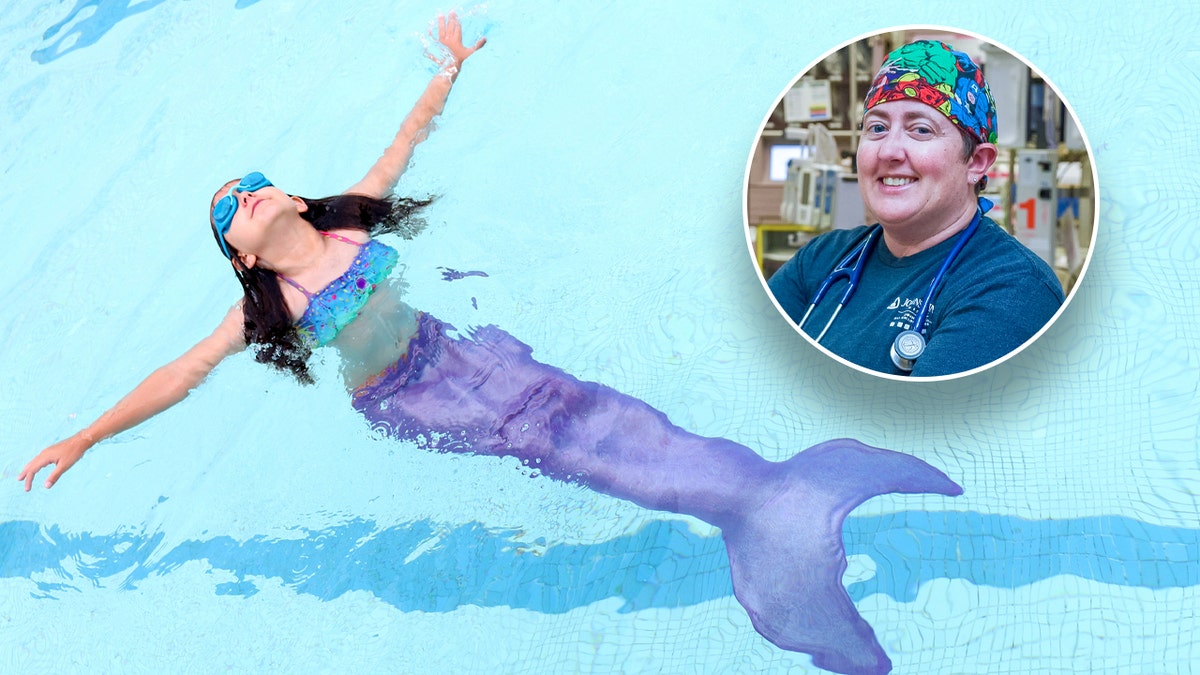
Dr. Meghan Martin (inset), a pediatric emergency medicine physician in St. Petersburg, Florida, has returned to TikTok to reveal her list of five most dangerous water toys to avoid. (iStock; Johns Hopkins All Children's Hospital)
In the heat of the summer, Martin adds one final piece of advice for keeping kids safe:
"If you can't find your kiddo or they're out of your vision for a second, the first places you need to check are the dangerous places, like the pool, because time is of the essence to get them out," Martin said.
CLICK HERE TO GET THE FOX NEWS APP
"Another dangerous place to look would be the car because it’s hot and they can get into the car and get the doors locked and not be able to get their way out."


